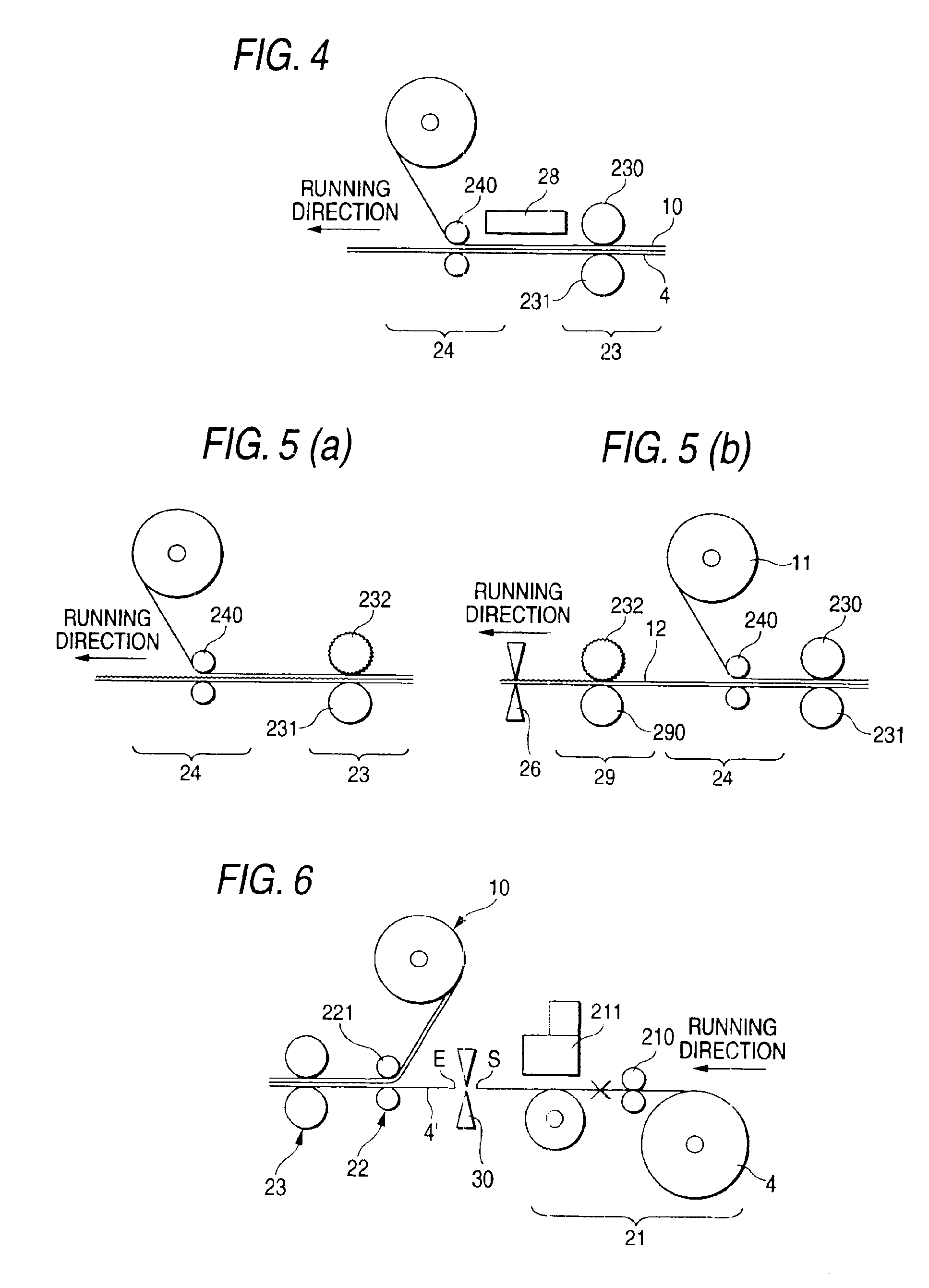Ink jet recorded matter and production process therefor, and thermal transfer sheet, ink jet recording apparatus, thermal transfer apparatus, and ink jet recording medium
a technology production process, which is applied in the direction of ink jet recording apparatus, thermal imaging, coating, etc., can solve the problems of poor image fastness, easy discoloration and fading, and image formation of pigment inks on the surface of recording medium, etc., to achieve satisfactory gloss, texture and feeling, and excellent image fastness
- Summary
- Abstract
- Description
- Claims
- Application Information
AI Technical Summary
Benefits of technology
Problems solved by technology
Method used
Image
Examples
embodiment 1
Embodiment 1 is an ink jet recording medium which comprises a substrate and an ink receiving layer formed on one side of the substrate and in which an ink jet recorded image and a protective layer covering the image are to be formed on the surface of the ink receiving layer.
This ink jet recording medium as embodiment 1 has features that before the formation of the ink receiving layer, said side of the substrate (the side on which the ink receiving layer is to be formed) has a Bekk's surface smoothness of 200 seconds or higher, preferably 250 seconds or higher, more preferably 300 seconds or higher, and that the surface of the ink receiving layer has a Bekk's surface smoothness of 60 seconds or higher, preferably 80 seconds or higher, more preferably 100 seconds or higher. Bekk's surface smoothness is measured in accordance with JIS P8119 (corresponding to ISO 5627). The formation of an ink receiving layer having a Bekk's surface smoothness within the specific range on the side of a ...
embodiment 2
Embodiment 2 is an ink jet recording medium which comprises a substrate having no ink receiving layer and in which an ink jet recorded image and a protective layer covering the image are to be formed on at least one side of the substrate. As this substrate in embodiment 2 can be used the same substrate as any of those according to embodiment 1 described above. A substrate treated with a metal salt solution is especially preferred in that it is effective in obtaining a high image density. Methods for substrate treatment with the metal salt solution are as described above with regard to embodiment 1.
The ink jet recording medium as embodiment 2 has a feature that the front and back side surfaces of the substrate each have a Bekk's surface smoothness of 200 seconds or higher, preferably 250 seconds or higher, more preferably 300 seconds or higher. Regulating the Bekk's surface smoothnesses of the front and back sides of the substrate to values within the range shown above makes it possi...
example a1
Using thermal transfer sheet 4, thermal transfer of the transfer layer was carried out with respect to each of ink jet recorded matter 1 and 2. Specifically, the thermal transfer sheet and the ink jet recorded matter were superposed so that the transfer layer of the thermal transfer sheet came to contact with the ink receiving layer of the recorded matter, and then were subjected to hot press treatment at a heating temperature of 100° C. and under a linear pressure of 8 kN / m by passing through between a pair of rolls, in which the roll to be brought into contact with the thermal transfer sheet was a heat roll, at a speed of 10 mm / sec, to press bond the transfer layer to the entire surface of the ink receiving layer. Thus, two kinds of press-bonded laminates were obtained and these laminates were designated as samples of Example A1.
PUM
| Property | Measurement | Unit |
|---|---|---|
| thickness | aaaaa | aaaaa |
| glass transition temperature | aaaaa | aaaaa |
| glass transition temperature | aaaaa | aaaaa |
Abstract
Description
Claims
Application Information
 Login to View More
Login to View More - R&D
- Intellectual Property
- Life Sciences
- Materials
- Tech Scout
- Unparalleled Data Quality
- Higher Quality Content
- 60% Fewer Hallucinations
Browse by: Latest US Patents, China's latest patents, Technical Efficacy Thesaurus, Application Domain, Technology Topic, Popular Technical Reports.
© 2025 PatSnap. All rights reserved.Legal|Privacy policy|Modern Slavery Act Transparency Statement|Sitemap|About US| Contact US: help@patsnap.com



